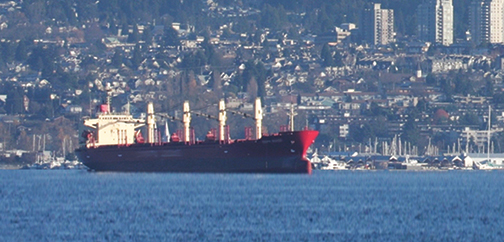Welcome to Blue Book!
Are you ready to join the thousands of companies who rely on Blue Book to drive smarter decisions? View our plans and get started today!
Still have questions? We’d love to show you what Blue Book can do for you. Drop us a line– we’ve been waiting for you.

Geographic location is a distinct advantage as well, including easy access to rail services that crisscross North America and $200 million in renovations at the Prince Rupert port, north of Vancouver, which began in 2015. The full buildout, which includes a new deepwater berth, additional container storage space, and more cranes for loading and unloading ships, will lead to thousands of jobs and millions in annual economic input.
As Western Canada’s second largest port (after Vancouver), Prince Rupert’s newly increased capacity is a bonus for shippers working with Asian suppliers.
“I expect to see more containers going through Prince Rupert to bypass increasing Vancouver port congestion,” Grant posits. While it is true capacity was up 15 percent last year, some of the surge in activity was due to the dock strikes and work stoppage at U.S ports.
Challenges
Despite many benefits, the Western provinces are confronted with their share of obstacles—just like the rest of Canada and the United States. Weather and labor shortages affect growers, safety and traceability loom large for exporters with the U.S.’s upcoming Food Safety Modernization Act implementations, and then there are Canada’s ongoing efforts to create its own Perishable Agricultural Commodities Act-like trust protections.
The exchange rate, too, continues to dog importers. “Everything we do is based on the U.S. market,” Furi says. “The increased cost because of the weakened Canadian dollar and increased freight cost are big challenges.”
“Canadian consumers are paying much more for imported fresh produce, especially from the United States,” confirms Grant. The reverse, however, has made exporters happy. “The weak Canadian dollar has been a boon to Western Canadian growers and shippers exporting to the U.S. market.”
Grant says there are also other issues plaguing imports, in British Columbia and up and down the West Coast. “We’ve experienced ocean carrier issues, port congestion, port labor and trucker disputes, and tighter Customs restrictions.”
Furi cites weather as a current and ongoing concern. “Weather issues were a huge challenge because of El Niño and frost. Everything possible weather-wise that can happen, has happened to us.” In these instances, he notes, “The three- to seven-day timeline for deliveries for quality product can be an issue; standards are being reviewed because the products won’t make grade due to weather conditions and costs.”
The Trans-Pacific Partnership
The coming Trans-Pacific Partnership (TPP) has the power to transform Western Canada’s import/export industry, with an influx of new tariff-free business. “I expect the TPP will be good for Canadian exporters,” Grant says, “but it will take time for each participating country to ratify the agreement and reduce or eliminate tariffs according to agreed schedules.” He is particularly excited about “access to the Japanese market, which is a great opportunity given the size of the economy, along with Australia, New Zealand, and other countries participating.”




